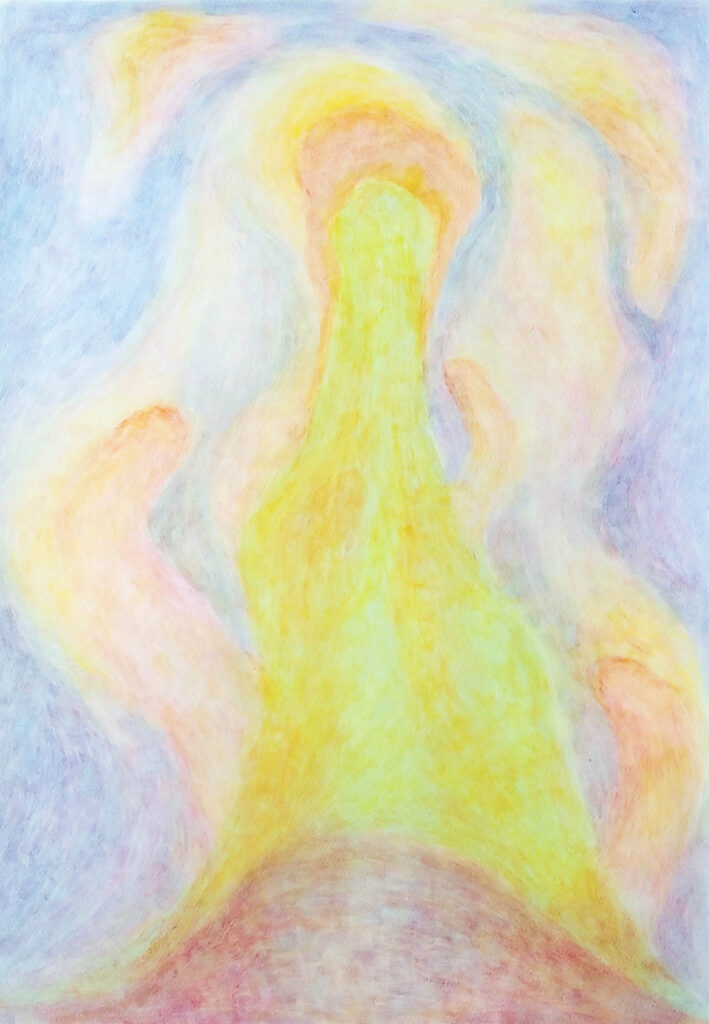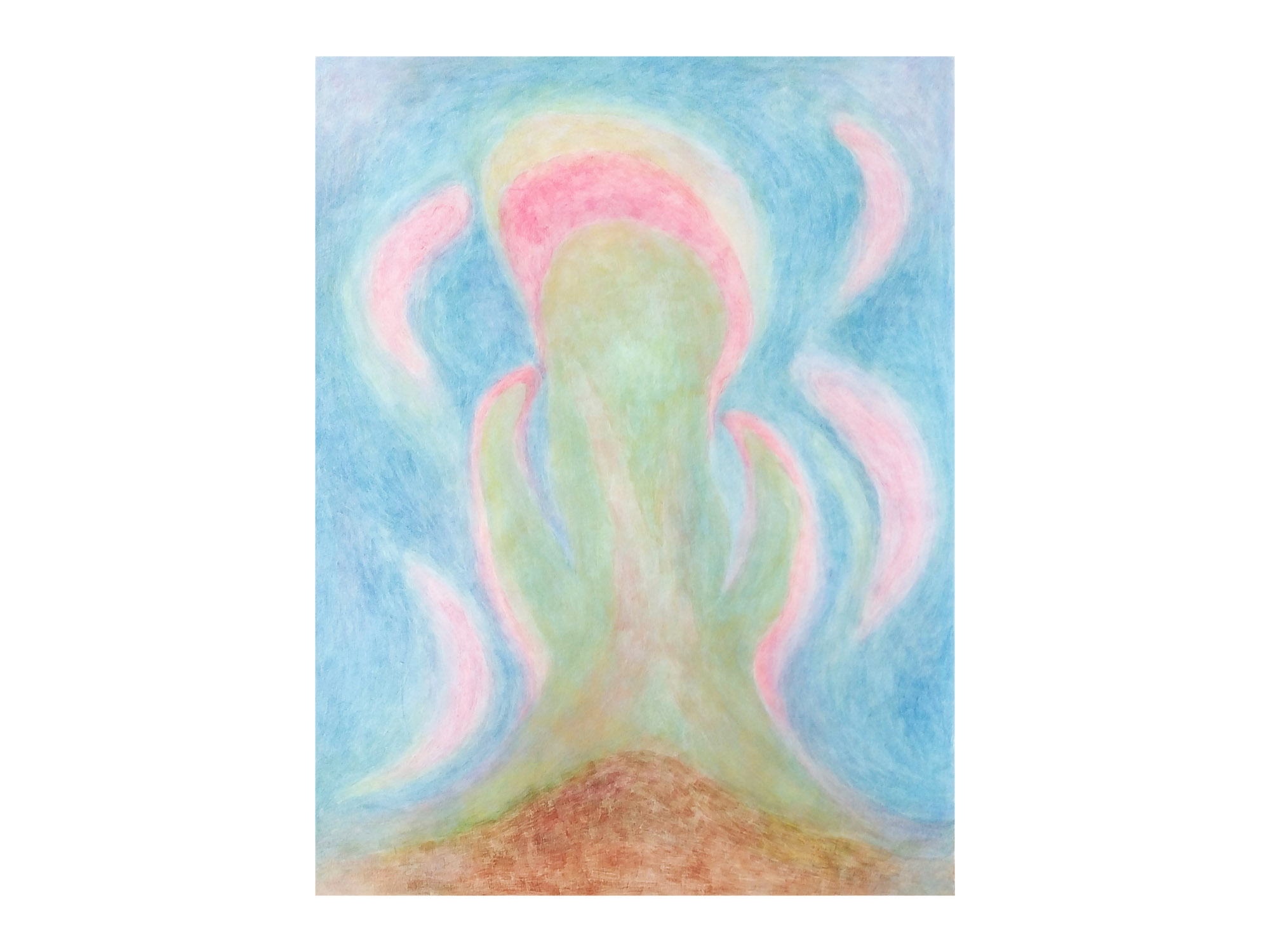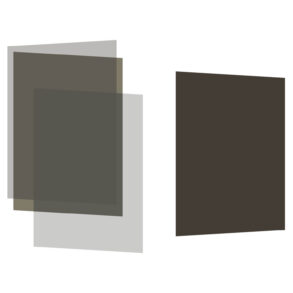The step from the Intellectual Soul to the Consciousness Soul is related to the relationship between the microcosm and the macrocosm. A short treatise.
1.
When I first heard Albert Einstein’s famous quote as a boy: “The most incomprehensible thing about the universe is basically that we can understand it,” I was tormented by it for a long time, because the root of understanding seemed obscure and incomprehensible to me. In our everyday consciousness it seems self-evident that we can understand the world just as we can speak. But as babies we can neither speak nor understand the world. Understanding is not rigid and self-evident but a faculty that develops from scratch in both general and individual human history. What is the root of this wonderful capacity? Maybe it’s just coincidence? A survival strategy in the evolution of humanity? A gift from the gods? What is the meaning of the capacity of reason?
2.
There is something within us that is capable of understanding the world—in anthroposophical terminology it is called the Intellectual or Mind Soul. Einstein’s Intellectual Soul is probably the most perfected in all of humanity so far, for it is able to regard the basic elements of understanding, namely time and space, as changeable objects of thought. In his theory of relativity, Einstein claims that motion and mass are not constrained by the eternal constant of time and space, as Newton thinks, but determine the temporal and spatial quantitatively. This is counterintuitive and can be understood as a Copernican revolution. In everyday life, one first needs temporal-spatial awareness, though more often unconsciously, in order to think about the “something” existing in space-time that can be looked at with the grammar of language. According to Einstein’s logic, this “something” actually creates the temporal-spatial first in order to allow itself to be thought. It would be as if an actor or actress did not performed on a pre-designed stage but was creating the stage as they acted. After this great achievement in physics, this most wonderful Intellectual Soul is not yet satisfied and asks another, more fundamental question: “Why is the world comprehensible?” This “why” question rises above the “how” question: ‘”How can I understand the world properly?” It is beyond science, on the philosophical level. Is the “why” question part of the world or part of the comprehending subject? In the former case, I could ask: “Is the comprehensibility of the world also comprehensible, and why?” Here, I would get caught in an endless cycle, like an ant running around a circle never able to reach an end point. It seems that we have to turn to the subject asking the question in order to solve the “why” question: “Why can I understand the world?” Now I have stepped out of the circle and am located on one standpoint.
3.
This “I” question is not easy to answer—like “Why can I see the world?” Because I have a pair of eyes? Yes, you have a pair of eyes and can see the world with them. But can you also see your eyes? Obviously I cannot see my eyes with the same eyes, unless I had a mirror. But the eyes reflected in the mirror are no longer my own eyes which are alive in my bodily organism as part of the whole, just as the rays of the moon are no longer those of the sun, although they originally come from it.
4.
So why can I understand the world? Because of our ability to think. Yes, we use this ability to understand the world or to think about the world. This means that the faculty of thought is an organ for us like the eye, with which the world can be perceived in an intelligible or lawful way. The lawfulness works externally and, to a certain extent, independently of us, the thinker, in the world. Why can the world be comprehended by the human faculty of thought? What we note is that thinking activity constantly produces results: thoughts. The relationship between thinking and thought is like that between the growth and the fruit of a plant. After the ripening of the thought fruit—the emergence of the thought—we can think about it effortlessly, as we do in everyday life. Do we have the capacity to think about thinking instead of thinking about the thought? Are we able to engage with the growth process of the plant rather than just enjoying its fruit? In the latter case, the thinking person thinks first, acquires a thought, then thinks about this acquired thought. This is successive in time and single-layered. In the former case, the thinking person thinks about thinking taking place here and now and the two thinking activities, that is, thinking and thinking about thinking, are simultaneous and two-layered. We have made a Copernican turn. The initial question, “Why is the world comprehensible?”, has more to do with the external world than with the thinking subject and is posed externally. By scrutinizing the thinking subject, that is, the Intellectual Soul, we have turned this question inward: “Why am I in a position to comprehend the world?” I comprehend the world through the thought that I or others have created. That is why I have to explore this thought. Where does it come from, and where is it going? It comes out of the thinking process and into consciousness. If I tend to grasp the dynamic thinking process as an already formed, rigid thought, I remain far from the heart of the matter. Now I inquire about entering directly into the thinking process that is taking place here and now: I want to think about thinking as happening here and now.
5.
Why is it so difficult to think about thinking directly—even more difficult than seeing the eye with the eye? Probably because of our state of consciousness. What happens in our soul and brain when we think? In thinking, typical in mathematics, we tend to become a kind of autonomously running robot. Put another way, we tend to sleep and dream deeply in it. Only when the result of this thinking process appears in our brain do we wake up and become aware of it. I have often tried to watch myself fall asleep. Then I couldn’t go to sleep because I had to be awake to watch myself falling asleep. Similarly, if we try to think about thinking, we interrupt the present thinking process and can no longer immerse ourselves in it. After that, of course, a second thinking process can take place, but it is no longer the first one that was there and is now over! Take an apple tree, as an analogy. This apple tree lives outside us. We have to take good care of it, water it, give it nutrients so that we can harvest and enjoy the ripe apples in autumn. Similarly, we have a thinking tree at home, or rather, “at soul”. In a sense, it also lives outside us—outside our consciousness and our intentional control. When we are not thinking, we are hardly aware of the thinking tree, although it continues to grow in the background. The thinking tree and the apple tree have much in common: both are built from the substance of life, the etheric; both emerge from a seed, namely an idea; both bear fruit after a process of growth. However, the apple tree is instinctively connected to the earth and the cosmos, and grows and bears fruit with the seasons of the earth. It is part of the earth organism and knows when and how to grow. In contrast, the thinking tree is dependent on a developing individual “I”. Compared to the apple tree, it is too young and too immature to bear fruit in a wise and harmonious way. That is why the fruit of thinking, that is the thought, more often than not, falls into our brain immaturely, haphazardly and inharmoniously. Often we are not even aware of the fruits of thinking that constantly appear in our heads because our consciousness is like a sieve whose holes are too coarse to catch the small fruits of thinking.
6.
Next to the thinking tree is a sibling, namely the art tree. It is said that creating art, which is actually the growth of this art tree, is a waking dream. 1 In this sense the creation of thought—the growth of the thought tree—is more opaque from the point of view of the state of consciousness than the creation of art. It is a dream coming close to deep sleep because the elements of thought-creation, either concepts or logic, are neither visible nor audible and are only thinkable.
7.
In Norse mythology, all worlds are built on the cosmic tree, Yggdrasil. This as a symbol: the living world, the macrocosm is created on the living plant-like, the etheric. Expressed anthroposophically: the spiritual reveals itself through the etheric, through the etheric stream, and the etheric structure reveals itself in the natural or cultural world, for example in a flower, a sentence or the arithmetic in mathematics. The lawfulness at work behind the revelation is the restraint and regulation of the spiritual. Compared to the cosmic tree, the human thinking tree is still a baby. When and how it appears, in general as well as individual human development, is an interesting question. In individual human development, after the change of teeth, the child acquires what might be called a free etheric body (not to be imagined as an object existing in time and space, for it unfolds through time and space), whereby the spiritual is still inherent as the spiritually childlike. This etheric body forms the basis of the individual thinking tree. From then on, the child must build, nurture and care for its own thinking tree in its life, namely its microcosm.
8.
Essentially, though, the apple tree is a thinking tree: its growth is at the same time its thinking, and its growth process is at the same time its thinking process. It is only due to the lack of a nervous system and brain that this process cannot be mirrored into consciousness. Similarly, the cosmic tree is also a thinking tree! So does it have a system of consciousness like the human being? Yes, the whole of humanity serves as a “brain” for the cosmic organism.
9.
Let us go back to the individual human being. Why does the training of thinking play a central role for the child, for the young person in education? In terms of spiritual science, there is a profound reason. When the child, through its thinking, recognizes the lawfulness quickened by these forces as well as the forces working according to this lawfulness in the thinking tree of the macrocosm in which the spiritual is mature and perfect, then the individual thinking tree in the child is built up according to the more mature “cosmic thinking tree”, and the spiritual in the microcosm is trained according to the same lawfulness of the macrocosm. In this sense, thinking and recognizing such lawfulness and spiritual forces is simply a training of the I and of the spirit. This gradually prepares the young person to be a creator, like their role model in the macrocosm. Thereafter the small individual thinking tree becomes a new cosmic tree.
10.
Until then, it is useful to differentiate three similar human activities: comprehension, thinking and cognition. The Intellectual Soul first creates an inner conception of the world from sensory experiences, extracts the logic from it, that is, the causality behind the conception, and brings it into consciousness as comprehension. Now it is convinced that it has understood the world. The process of comprehension is a cooling process, bringing about an intellectual feeling of satisfaction and security. The objective causality of the world is superior to and seems immortal to the soul, which feels itself to be a mortal being—the soul can only receive it with humility. The comprehending subject can neither perceive nor feel the still sleeping “I”, therefore it can only comprehend lifeless lawfulness without the spiritual forces. On the one hand, it feels pride because of the possession of the eternal laws of the world, and on the other hand, it feels inferior in the face of the same mute, ironclad laws. Thinking, by contrast, is an inner, sentient activity of the I. The I draws into its soul the sensory experiences that arise at the boundary between the I and the world. Then it forms creative phenomena in time and space. From this, the I extracts or abstracts from the phenomenon the lawfulness that regulates the eternal forces. It exposes the astral and immerses itself in the etheric until it reaches the eternal. In this sense, pure thinking is simply an inner will that manifests itself in the soul and has little to do with the body. Cognition stands at the end point of the thinking process and at the starting point of the process of consciousness. It is right on the boundary where thinking and consciousness meet. At the moment of cognition, the I does not recognize, as in comprehension, the causality of the world behind the conception but, instead, the lawfulness behind the phenomenon brought to life by these forces, and at the same time the forces working according to this lawfulness. The thinking I is already awake here. It can both perceive and sense itself as the primary force within all forces. Now the I no longer feels the intellectual satisfaction of the egoistic plane but an ever-increasing sensation of beauty and a sense of wonder. It no longer divides feelings into pride and inferiority, like the intellectual or mind soul, but attains the highest satisfaction and rests in eternity, in its original home.
11.

The lawfulness of the world that regulates the eternal forces and at the same time is vitalized by them, is deeply anchored in existence and has penetrated nature and culture everywhere, just as sunshine has penetrated the earth. That is why humanity founded so many different natural sciences, cultural sciences and humanities: in order to understand the manifold facets of the laws of the world. The faculty of thought is basically like the faculty of sight, only on a higher level. These lines by Goethe ring deep within my heart: “Were not the eye sunlike, it could never behold the sun. If God’s own power were not within us, how could the divine delight us?”
12.
Why is the world thinkable? Now we can try to answer the question: because the world that is the macrocosm and the human being that is the microcosm, have the same thinking essence. Only the former is already revealed—the latter, not yet. Thinking and, furthermore, the recognition of the union of the lawfulness and spiritual forces of the macrocosm are an imitation, a training of the microcosm. Thus the spiritual in the microcosm trains itself lawfully in the same way that the spiritual in the macrocosm behaves lawfully in this respect, but in a wiser way. This leads to the spiritual in the macrocosm being able to liberate itself and develop to a higher level. The beginning of Rudolf Steiner’s Leading Thoughts speaks of this: “Anthroposophy is a path of knowledge that seeks to lead the spiritual in the human being to the spiritual in the cosmos.” The lawfulness that accompanies and governs the sacred forces attracts the human being to make them known, like light and the eye. From this the human being develops their thinking capacity and builds up their own thinking tree. Perhpas this small thinking tree sprouted when Adam and Eve ate the fruit from the Tree of Knowledge. It has been growing since the first post-Atlantean cultural epoch: ancient Indian culture. It is probably the central motif of all post-Atlantean cultures to unfold this faculty of thought, to continue to develop it in a healthy way. We people today, in the twenty-first century, are still on the path of this motif, perhaps only at the beginning. The rapid development of artificial intelligence is pushing people to recapture their own thinking capacity. The ability to think about thinking, or to think directly within the thinking process in a harmonious and wise way, is different from artificial intelligence and is still of the future. Nevertheless, every great journey begins with a small step. Rudolf Steiner founded sound and tone eurythmy as visible speech and visible song. In the future, a new kind of eurythmy, namely thought eurythmy, could be created. If the task of sound and tone eurythmy were to reveal the essence of speech and song and to prepare the future cross-cultural language, the task of this thought eurythmy would be the same, only with regard to thinking, which is more inward and abstract.
Translation Christian von Arnim
Title image Hao Bu, Geschöpf oder/und Schöpfer? 2 [Creation or/and Creator? 2], 66 × 47 cm, Plant dyes on paper, 2023.









